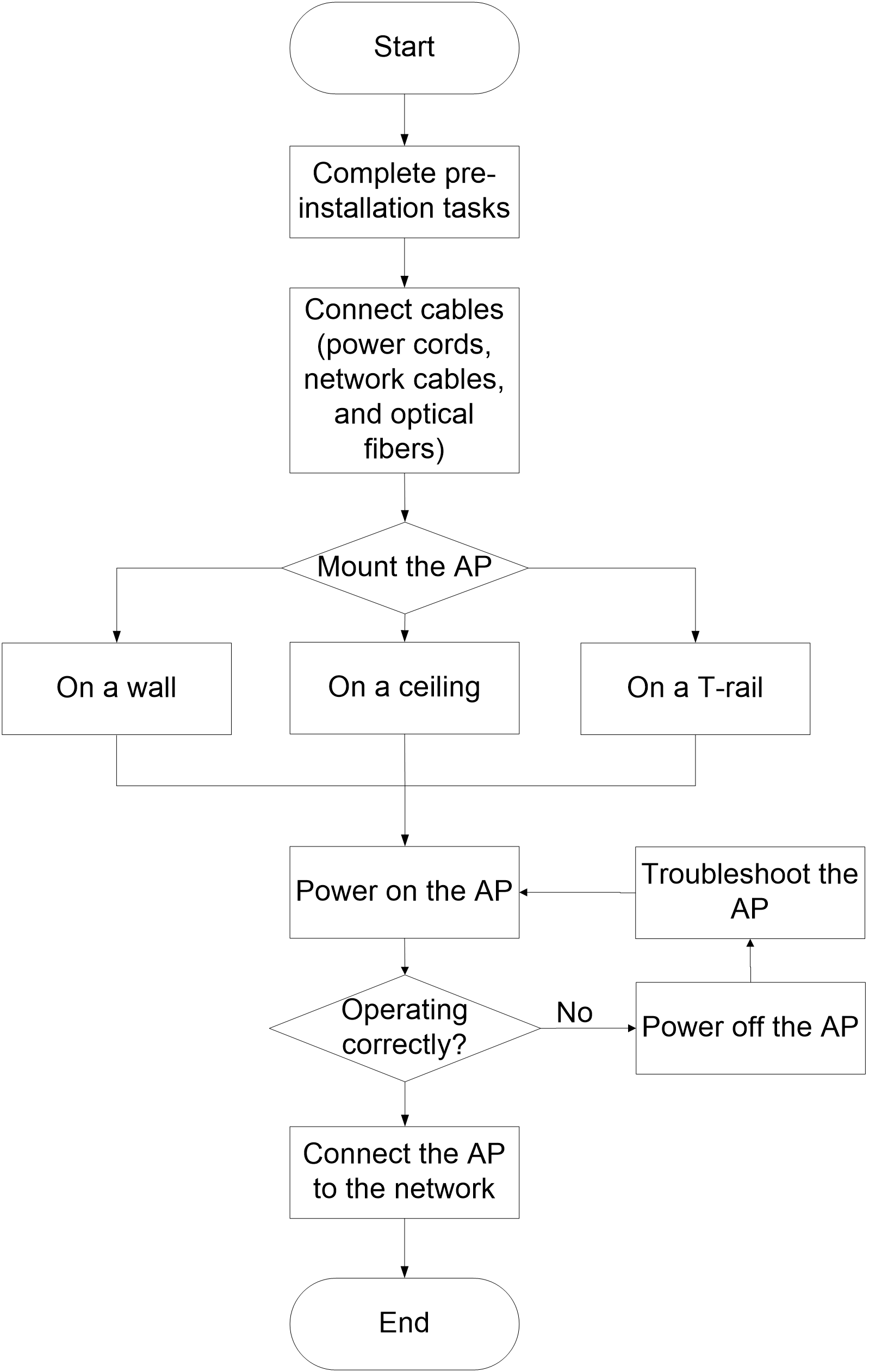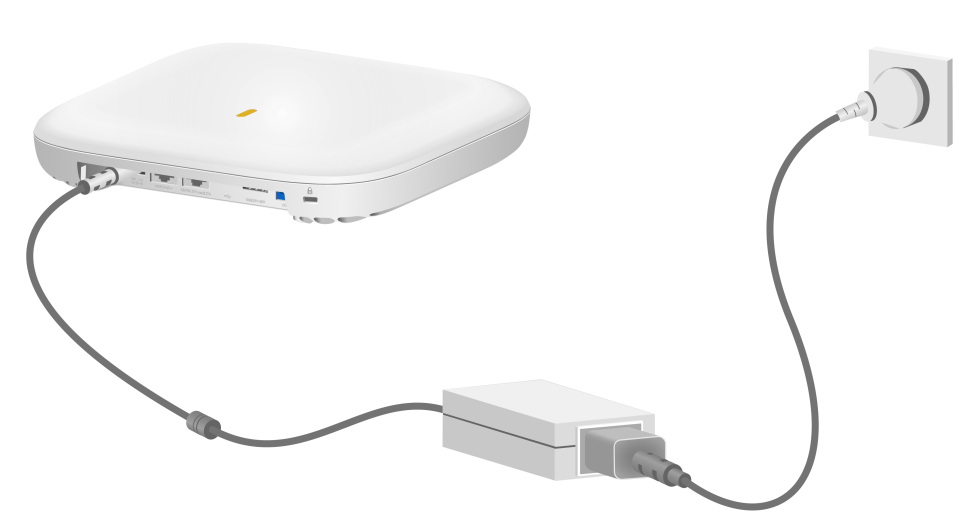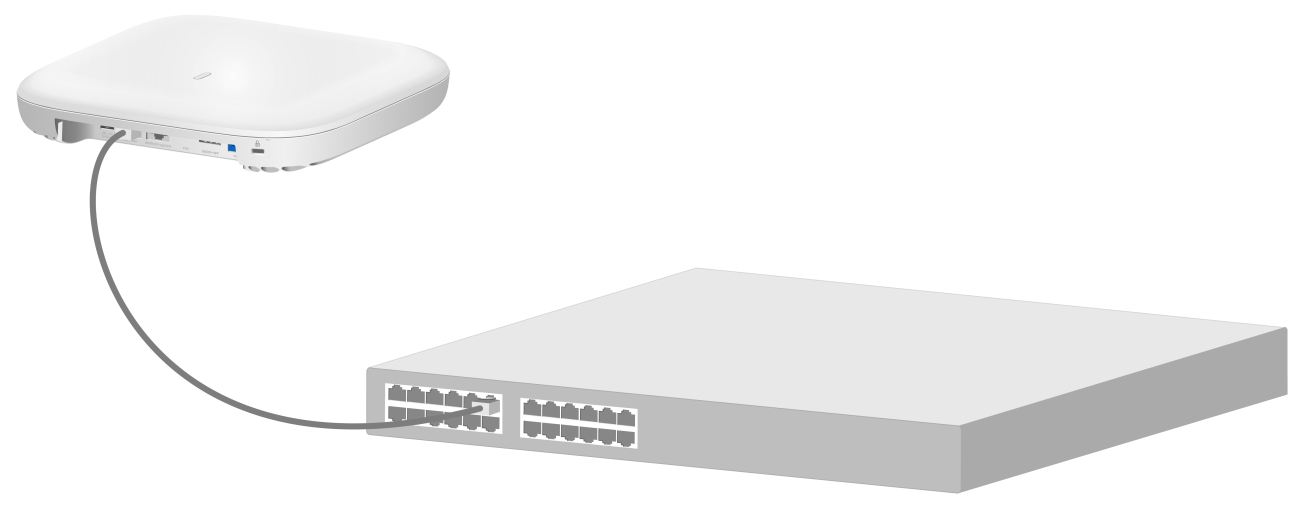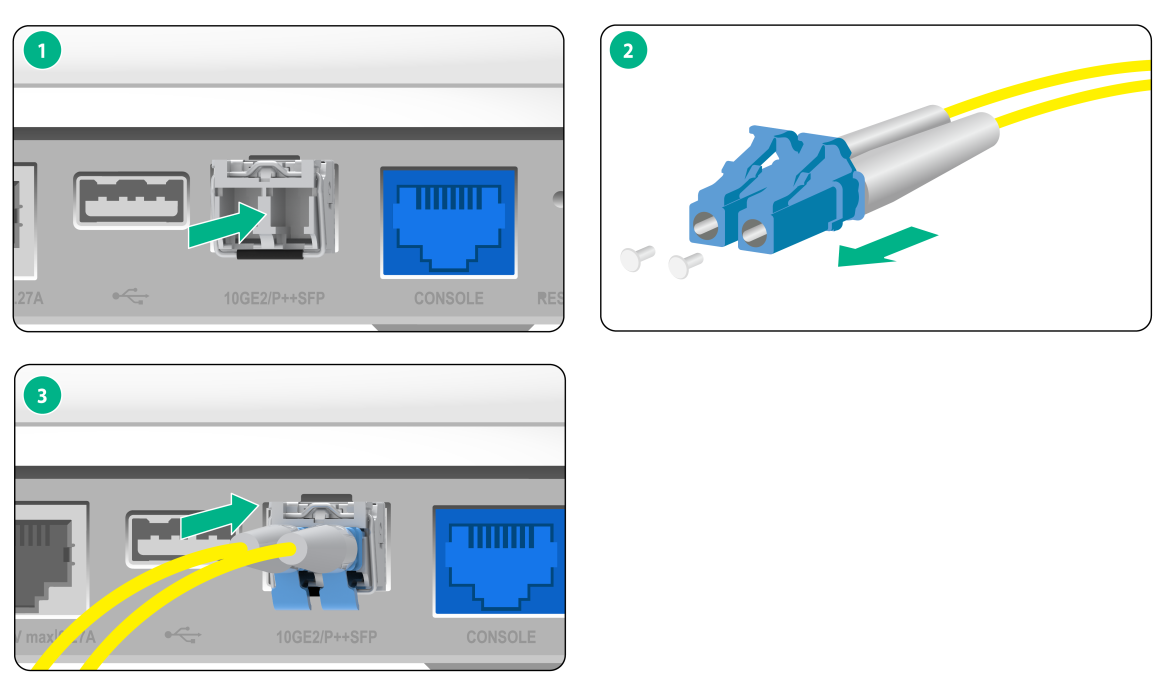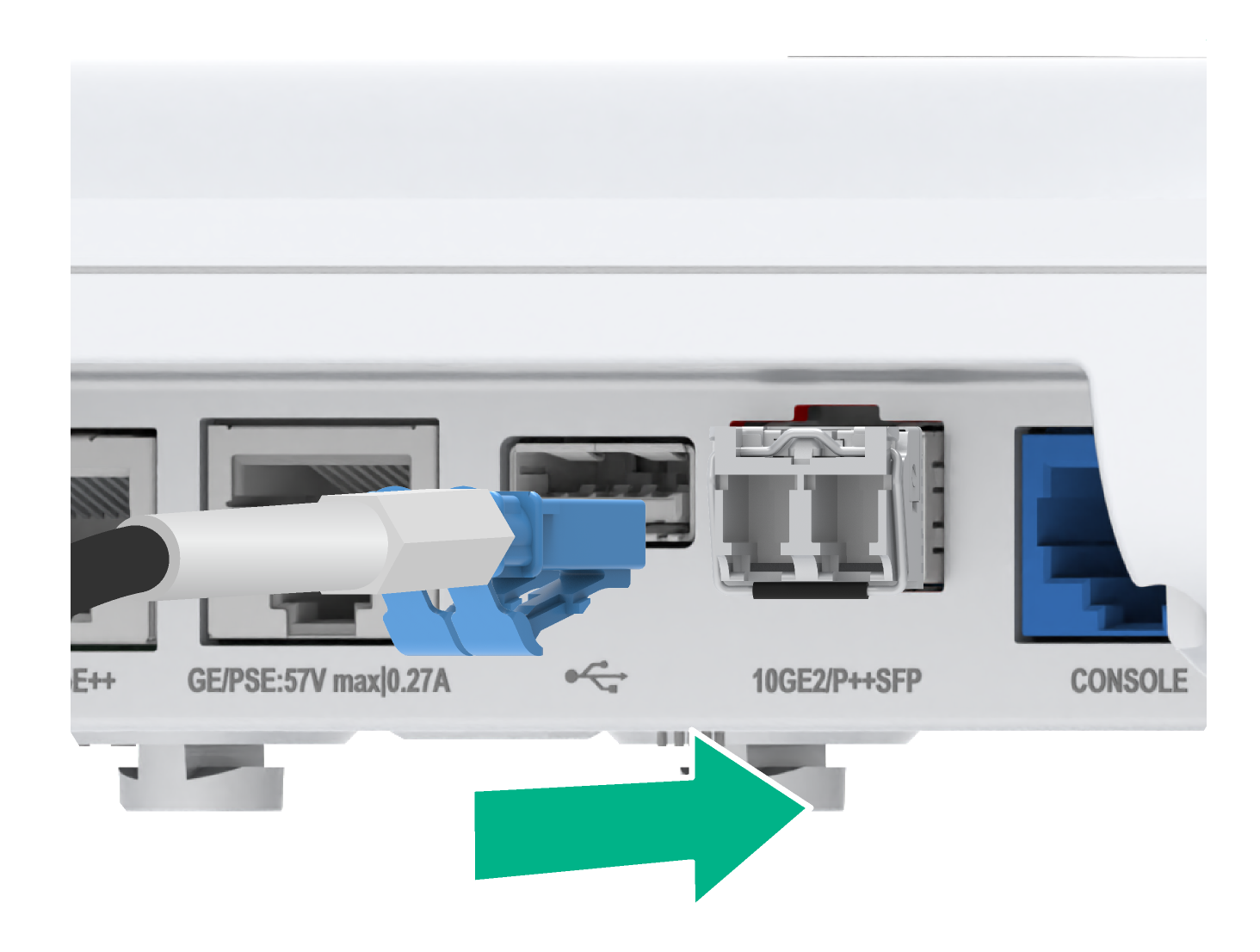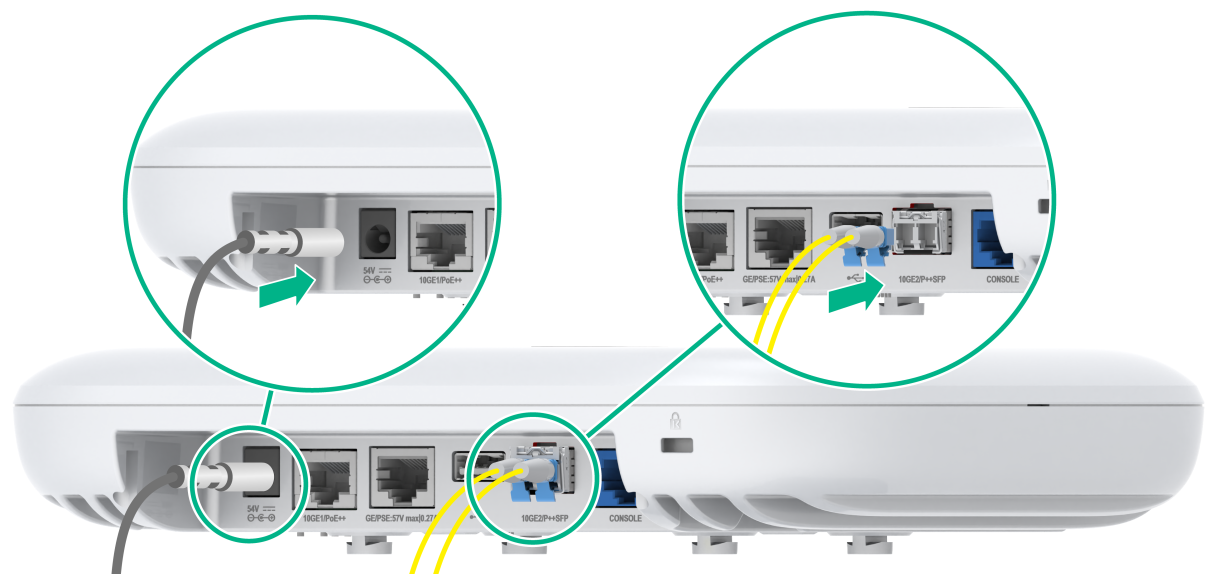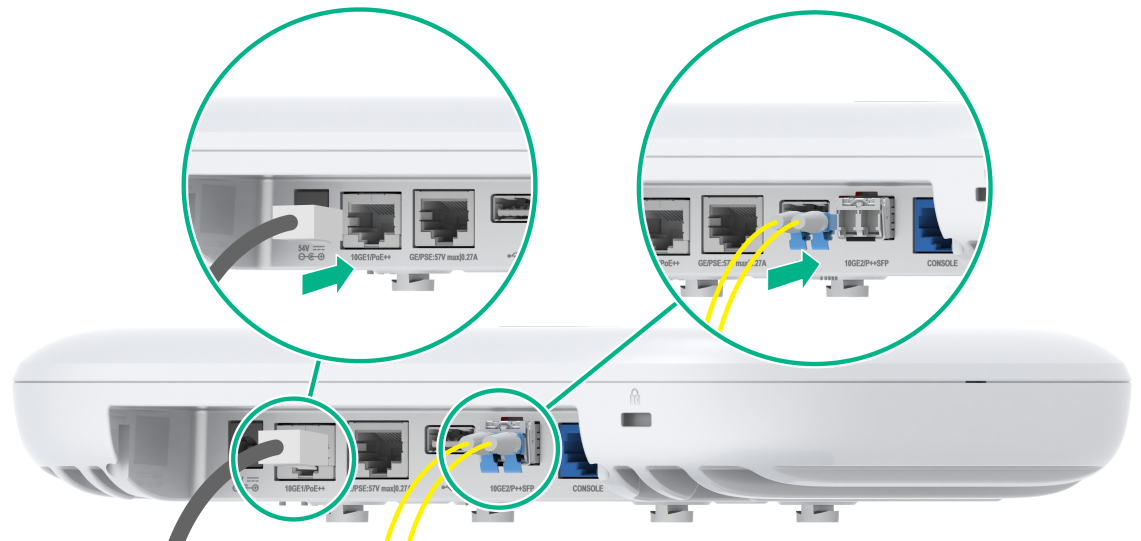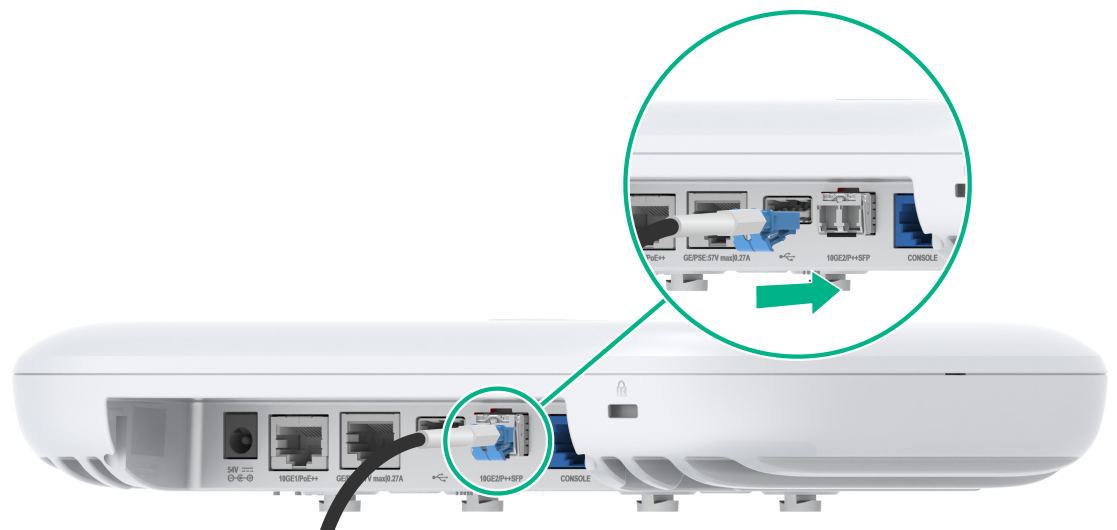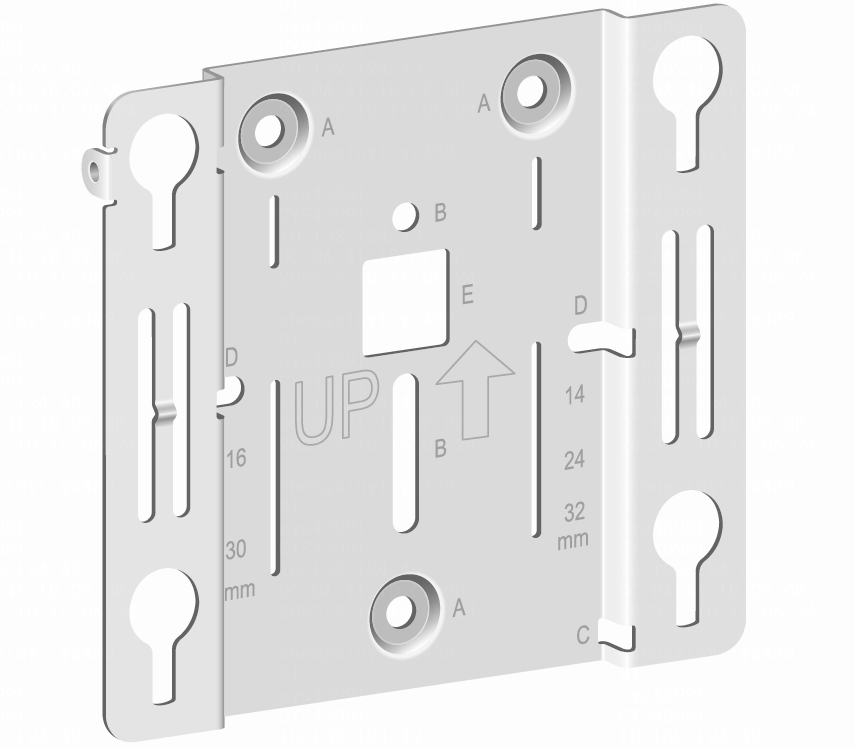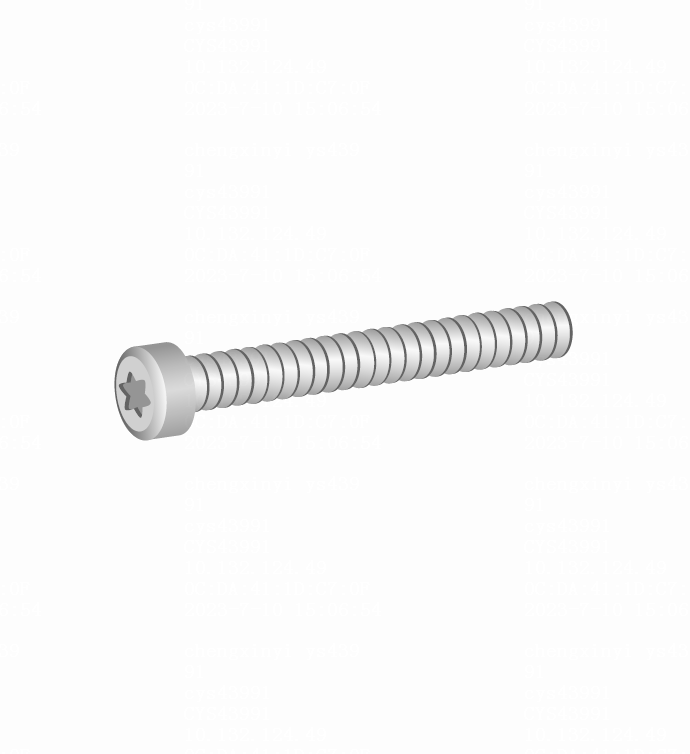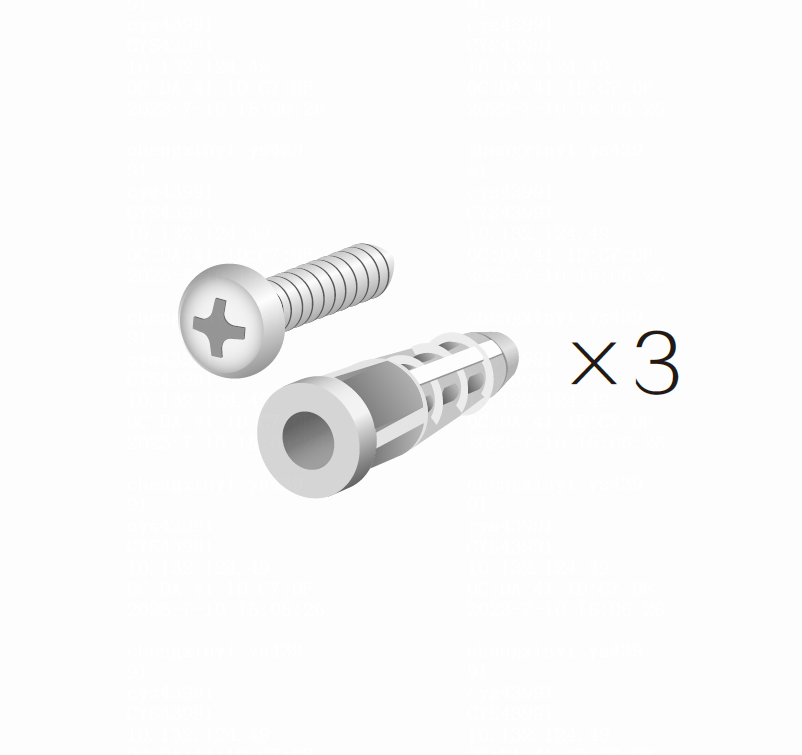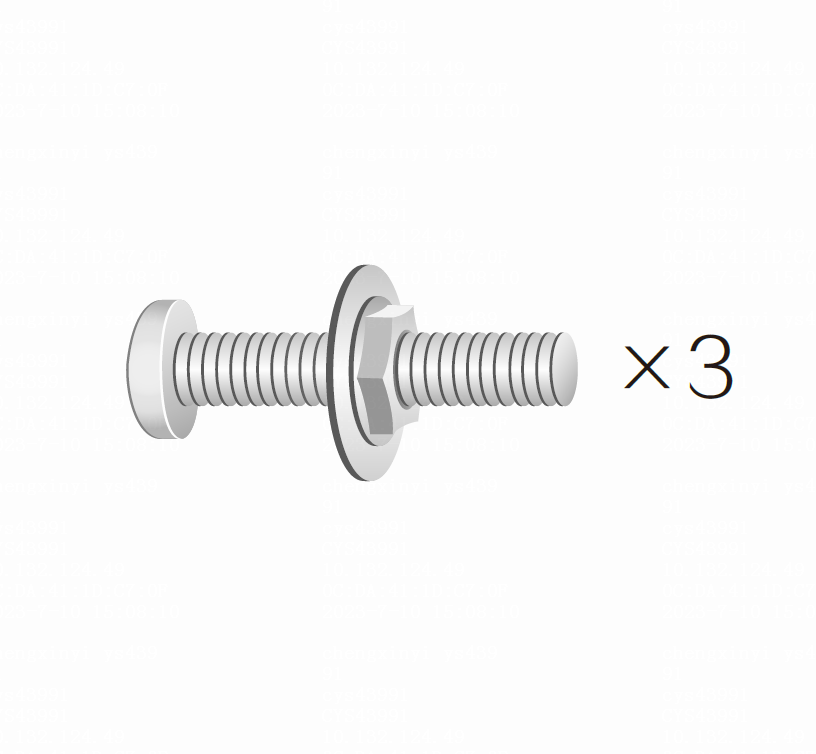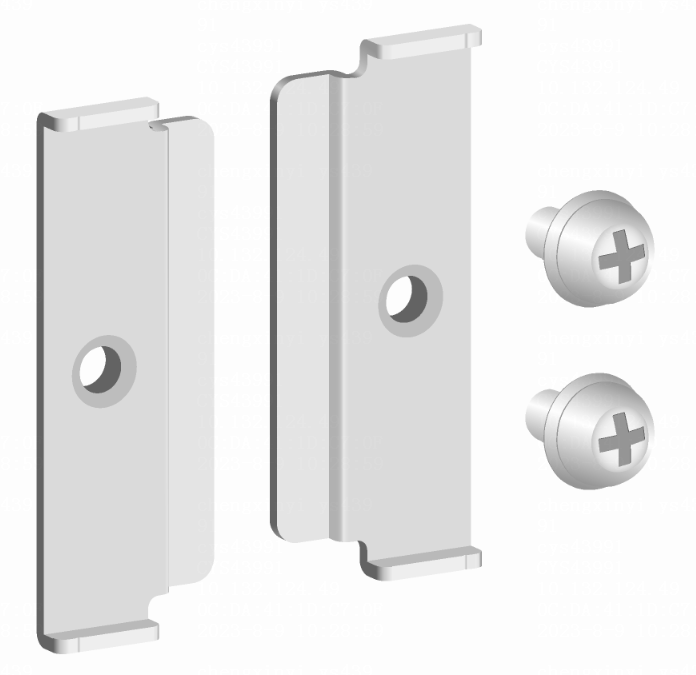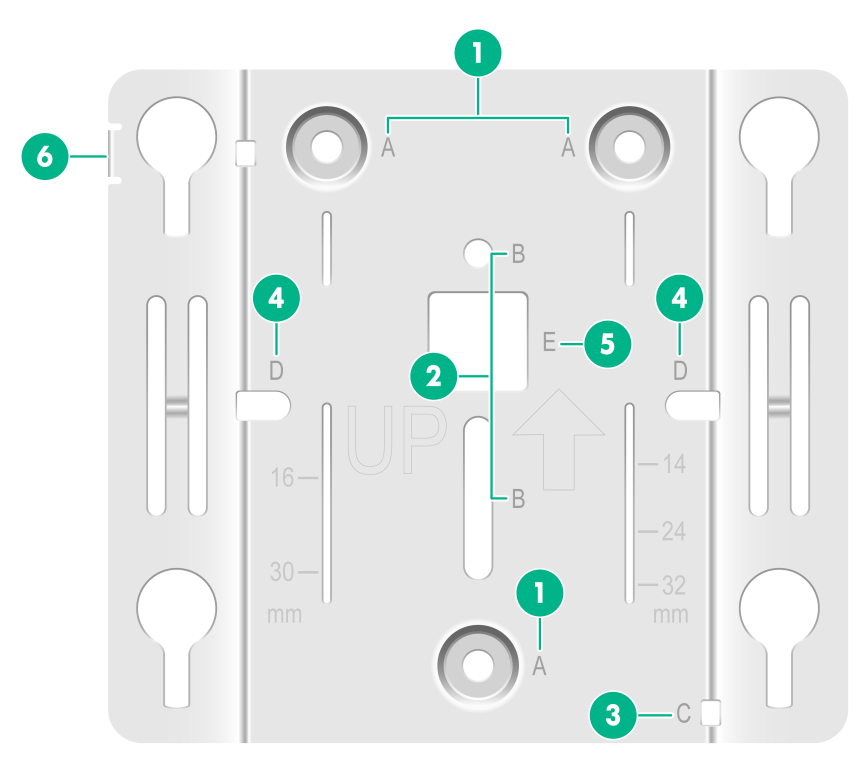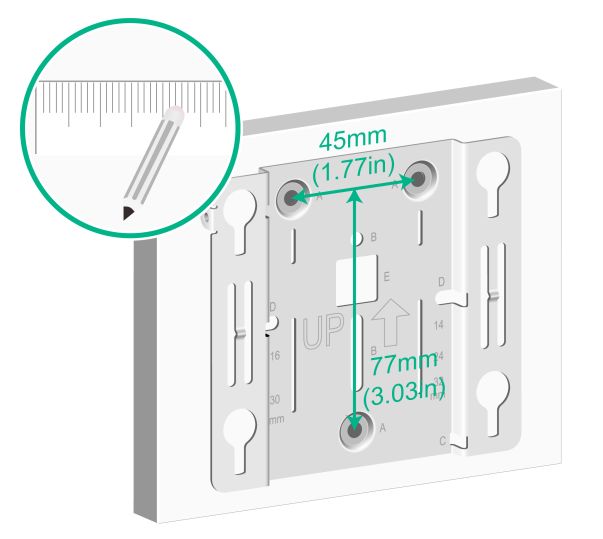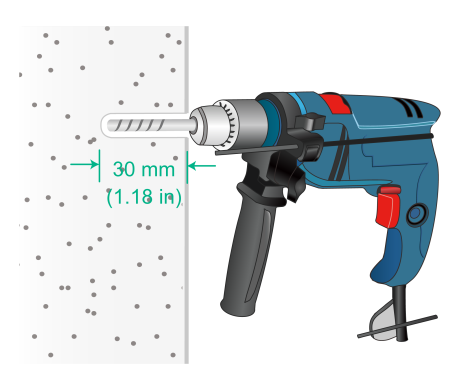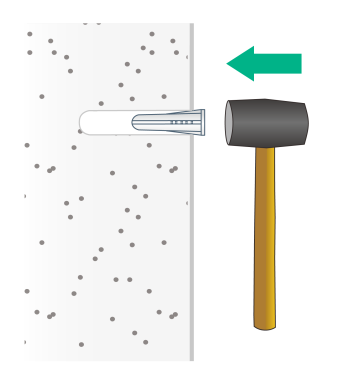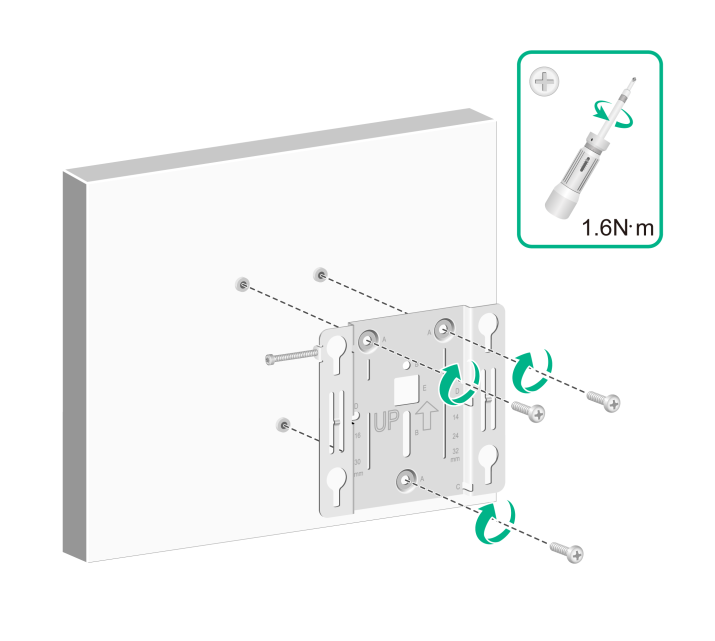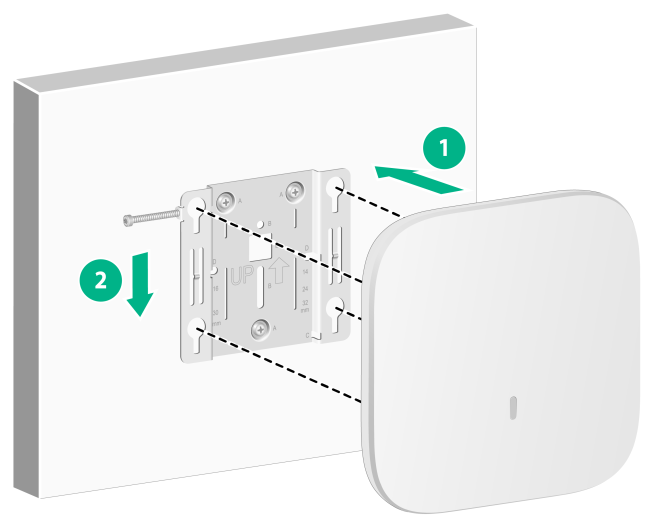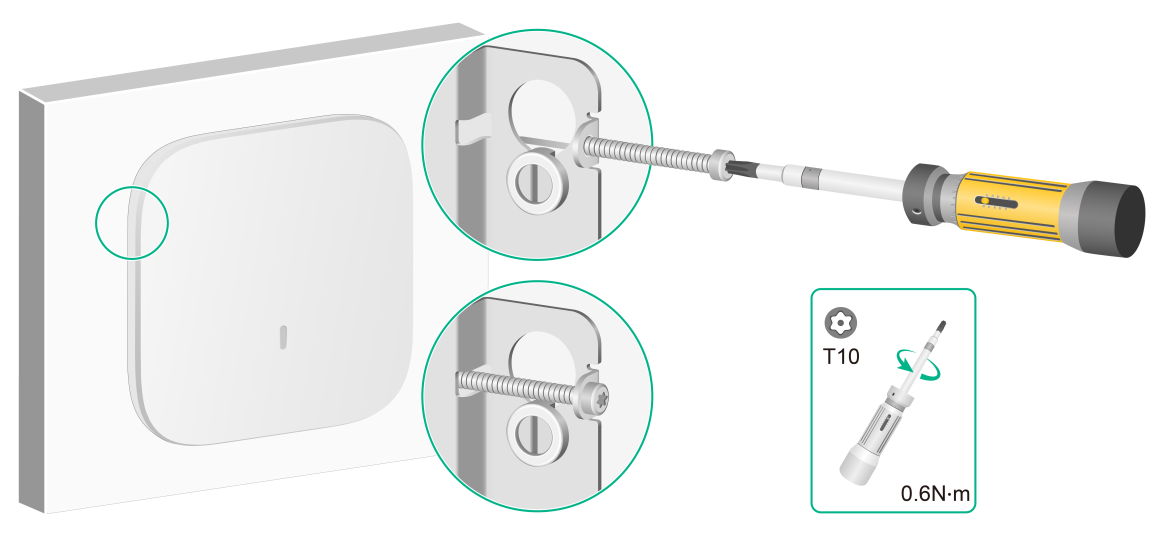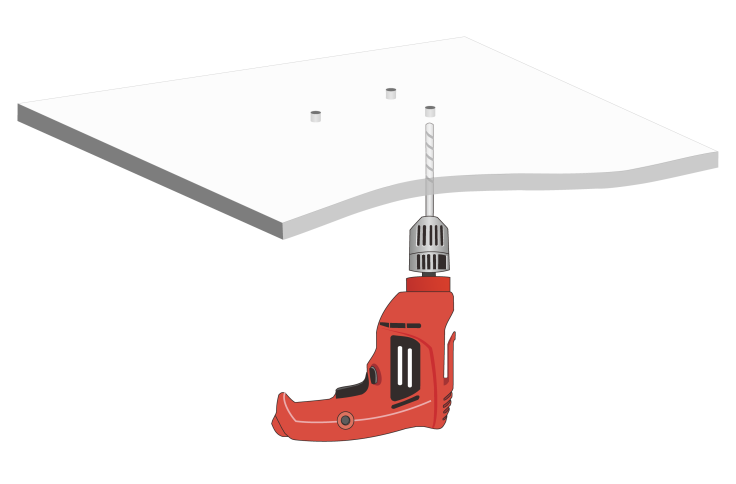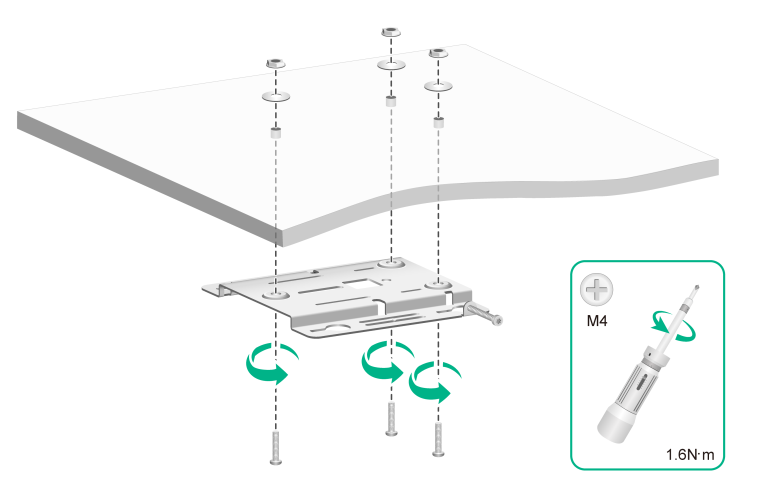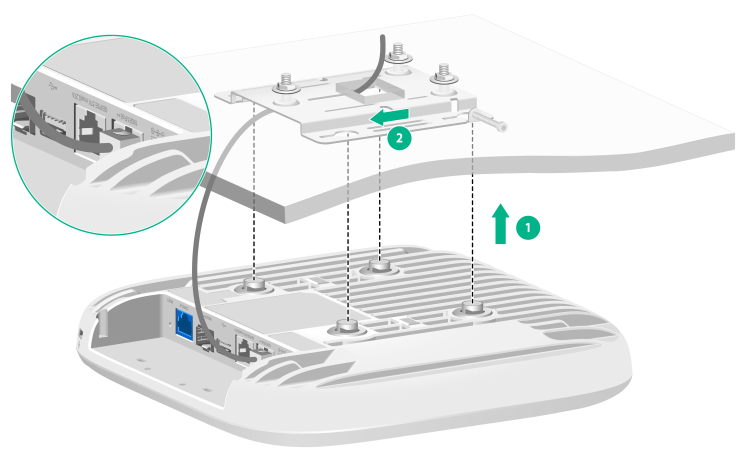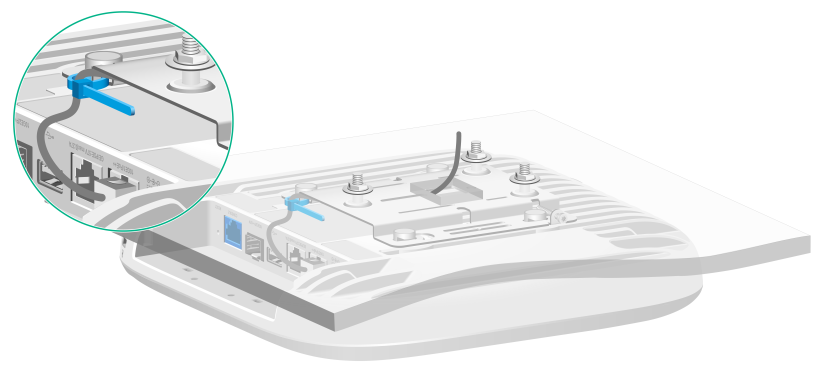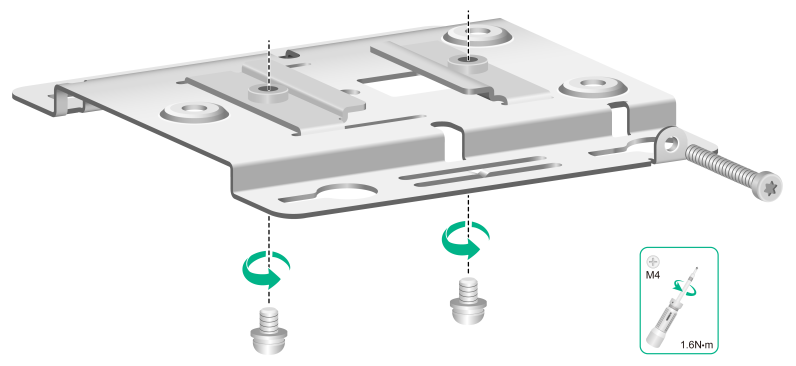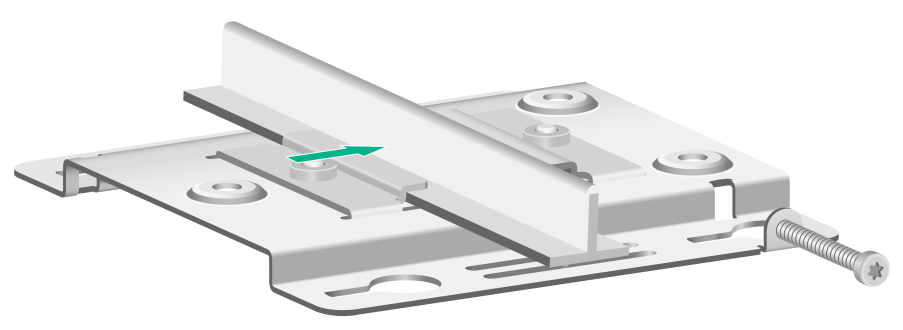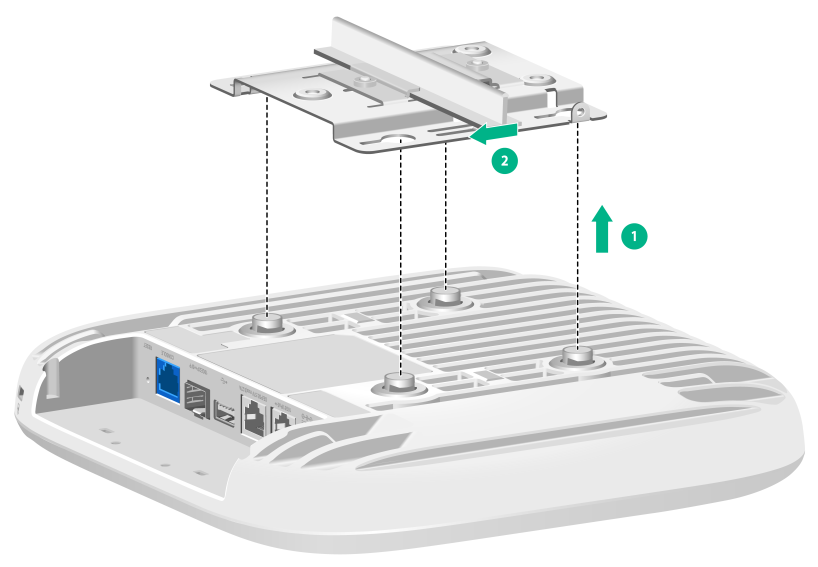- Table of Contents
-
- H3C WA7539 Access Point Installation Guide-5W100
- 00-Preface
- 01-Installing the device
- 02-Logging in to the device
- 03-Appendix A AP views and technical specifications
- 04-Appendix B LEDs and buttons
- 05-Appendix C Optional transceiver modules
- 06-Appendix D Connecting the hybrid copper-fiber cable
- 07-Appendix E Cabling recommendations
- Related Documents
-
| Title | Size | Download |
|---|---|---|
| 01-Installing the device | 1.56 MB |
General safety recommendations
Determining the installation position
Connecting a common optical fiber
Connecting a hybrid copper-fiber cable
6 Connecting the AP to the network
Verifying that the AP has been connected to the network when it operates in fit mode
Verifying that the AP has been connected to the network when it operates in cloud mode
1 Installation flowchart
Figure 1-1 Installation flowchart
2 Preparing for installation
Safety recommendations
Safety labels
|
Safety label |
Description |
|
Hot surface warning label. A device attached with this label might have a hot surface during operation. Install the device in a restricted access location. Only servicing engineers or trained personnel can operate the devices in the access location. |
General safety recommendations
|
WARNING! Only professional technical personnel can install and remove the AP and its accessories. You must read all safety instructions carefully before working with the AP. |
To avoid possible bodily injury and equipment damage, read the following safety recommendations before installing the AP. Note that the recommendations do not cover every possible hazardous condition.
· To avoid bodily injury and device damage, take adequate safety measures.
· Place the AP in a dry and flat location and take anti-slip measures.
· Keep the AP clean and dust-free.
· Do not place the AP in a moist area and avoid liquid intrusion.
· Keep the AP and installation tools away from walkways.
Site preparation
Before installing the AP, examine the installation site and make sure the AP will operate in a favorable environment. Make sure the temperature, humidity, and altitude at the installation site meet the requirements in Table 2-1.
Table 2-1 Temperature, humidity, and altitude requirements
|
Item |
Specification |
|
Operating temperature |
–10°C to +55°C (14°F to 131°F) |
|
Operating humidity |
5% RH to 95% RH, noncondensing |
|
Operating altitude |
–60 m to +5000 m (–196.85 ft to +16404.20 ft) |
Installation tools
When installing the AP, you might need the following tools. Prepare the installation tools yourself as required.
Figure 2-1 Installation tools
Pre-installation tasks
Before installing the AP, perform the following tasks:
· Connect the AP to a power source and the network. Examine the LEDs to verify that the AP is operating correctly. For information about AP LEDs, see "Appendix B LEDs and buttons".
· Record the MAC address and serial number at the rear of the AP for future use.
· Make sure you have completed cabling at the installation site.
· If the Ethernet interface rate is 1, 2.5, or 5 Gbps, use Cat-5e or above network cables. If the Ethernet interface rate is 10 Gbps, use Cat-6a or above network cables. For information about the supported interface rates, see "Appendix A AP views and technical specifications".
· The AP is typically installed on a high position. As a best practice, access and configure the AP before installing it.
· If a cable is routed outdoors, make sure a lighting arrester is attached to the AP port. Prepare a lighting arrester yourself as needed.
Determining the installation position
Determine the installation position by observing the following principles:
· Few obstacles such as wall exist between the AP and clients.
· The AP is far away from electronic devices (such as microwave oven) that might generate radio frequency (RF) noise.
· The AP does not hinder people’s daily work and life.
· The place is not water seeping, water soaking, and condensing.
3 Connecting cables
Before you connect cables to the AP, make sure cable routing is completed on the installation site. For more information about cable routing, see “Appendix E Cabling recommendations.” Table 3-1 shows the cables available for the AP.
|
Port |
Cable |
Applicable AP models |
|
Power port |
Use a DC power adapter that has a round connector with a diameter of 5.5 or 2.1 mm (0.22 or 0.08 in) to supply power for the AP. See “Connecting a power adapter.” |
WA7539 |
|
Ethernet port |
Use an Ethernet cable to connect a switch to supply PoE power for the AP. See “Connecting an Ethernet cable.” |
|
|
Fiber port |
Use a common optical fiber for network connection. See “Connecting a common optical fiber.” |
|
|
Use a hybrid copper-fiber cable for power supply and network connection. See “Connecting a hybrid copper-fiber cable.” |
The cable connection scheme varies by powering option. Select a cable connection scheme as required. For more information, see "Cable connection schemes."
After you finish connecting cables to the AP, follow these restrictions and guidelines:
· If the AP has a cable cover, attach the cable cover to the AP. The cable cover is not required in the following conditions:
¡ Shielded network cables are used to connect Ethernet ports on the AP.
¡ Optical fibers are used to connect fiber ports on the AP.
¡ A power adapter with a straight connector is used to supply power for the AP.
· Power on the AP after you finish the whole installation procedure.
Connecting a power adapter
No power adapter is provided with the AP. Purchase a power adapter from H3C as required.
Table 3-2 Power adapter specifications
|
Item |
Description |
|
Input |
100 to 240 VAC |
|
Output |
|
|
Output power |
≥ 60 W |
As shown in Figure 3-1, you can use a power adapter to connect the AP to a local power source.
Figure 3-1 Using a power adapter to connect the AP to a local power source
Connecting an Ethernet cable
To power the AP through PoE, you must use an 802.3bt-compliant PoE switch to supply power for the AP. The maximum output power for this powering option is 60 W.
As shown in Figure 3-2, use an Ethernet cable to connect an Ethernet port on the PoE switch and the 10GE1/PoE++ port on the AP.
Figure 3-2 Connecting an Ethernet cable
Connecting a common optical fiber
The fiber ports on the AP support only LC connectors. Purchase common transceiver modules yourself as required. For more information about common transceiver modules, see “Appendix C Optional transceiver modules.”
To connect common optical fibers:
1. Holding both sides of the common transceiver module, insert the transceiver module slowly into the port.
2. Remove the dust caps from the optical fiber LC connectors.
3. Identify the Rx and Tx ports on the transceiver module. Use optical fibers with LC connectors to connect the Rx port and Tx port on the transceiver module to the Tx port and Rx port on the peer end, respectively.
Figure 3-3 Connecting common optical fibers
Connecting a hybrid copper-fiber cable
The AP supports PoE optical transceiver modules. Purchase them yourself as required. For more information about the PoE optical transceiver modules, see “Appendix C Optional transceiver modules.”
To connect a hybrid copper-fiber cable:
1. Strip the hybrid copper-fiber cable, fusion splice optical fibers, and splice copper wires. For more information, see “Appendix D Connecting the hybrid copper-fiber cable.”
2. Holding both sides of the PoE optical transceiver module, insert the transceiver module slowly into the port.
3. Connect one end of the hybrid copper-fiber cable to the PoE optical transceiver module.
Figure 3-4 Connecting a hybrid copper-fiber cable
Cable connection schemes
The AP supports different powering and communication options. Read chapters from "Connecting a power adapter" to "Connecting a hybrid copper-fiber cable" and see Table 3-1 before you select a cable connection scheme as required.
The following figures are only for your reference.
Powering the AP by using a power adapter
· Connect an uplink port on the AP to an Ethernet port for communication and power the AP by using a power adapter.
· Install a common transceiver module in an uplink port on the AP for communication and power the AP by using a power adapter.
Figure 3-5 Installing a transceiver module and powering the AP by using a power adapter
Power the AP through PoE
· Use an Ethernet cable to connect the PoE port on the AP and PoE switch for PoE power supply and communication.
· Install a common transceiver module in an uplink port on the AP for communication and use an Ethernet cable to connect the AP and PoE switch for PoE power supply.
Figure 3-6 Installing a transceiver module and powering the AP through PoE
Powering the AP by using a PoE optical transceiver module
An uplink port on the AP uses a PoE optical transceiver module and a hybrid copper-fiber cable for receiving power and communication. You do not need to connect other cables.
Figure 3-7 Powering the AP by using a PoE optical transceiver module
4 Installing the AP
|
IMPORTANT: · Before mounting the AP on a wall or ceiling, connect cables to the AP. · Install an M3 × 23.5 security screw as required. |
Installation accessories
Table 4-1 Installation accessories
|
Installation accessories |
Applicable AP models |
|
|
Mounting bracket (provided) |
M3 × 23.5 security screw (provided) |
WA7539 |
|
Screw and screw anchor (provided) |
M4 × 30 pan-head screw (provided) |
|
|
T-rail kit |
Optional for WA7538 |
|
Figure 4-1 Mounting bracket
|
(1) (A holes) Wall/ceiling mounting holes, used for securing the mounting bracket to the wall/ceiling |
|
(2) (B holes) T-rail mounting holes, used for securing the mounting bracket to a T-rail |
|
(3) (C hole) Auxiliary cable management hole. Thread a cable tie through the hole to secure cables. |
|
(4) (D holes) 86 panel mounting holes, used for securing the mounting bracket to an 86 panel. The distance between the two holes is 60 mm (2.36 in). |
|
(5) (E hole) Thread a cable through the hole to connect the AP |
|
(6) Security hole, applicable to the M3 × 23.5 security screw |
Mounting the AP on a wall
1. Place the mounting bracket against the wall and mark the installation holes on the wall.
Figure 4-2 Marking the installation holes on the wall
2. Drill three holes with a diameter of 6 mm (0.24 in) and a depth of 30 mm (1.18 in) at the marked locations, as shown in Figure 4-3.
Figure 4-3 Drilling holes in the wall
3. Insert a screw anchor into each hole, and tap the screw anchor with a rubber hammer until it is all flush with the wall surface, as shown in Figure 4-4.
Figure 4-4 Hammering the screw anchor into the wall
4. Thread the M3 × 23.5 security screw through the security hole in the mounting bracket. Make sure the screw does not block the keyhole slot.
Figure 4-5 Inserting the security screw
5. Insert the screws through the installation holes in the mounting bracket into the holes in the wall. Fasten the screws to secure the mounting bracket to the wall, as shown in Figure 4-6.
Figure 4-6 Attaching the mounting bracket to the wall
6. Position the four pegs at the AP rear into the keyhole slots in the mounting bracket and then slide the AP down until it sits securely in the keyhole slots, as shown in Figure 4-7.
Figure 4-7 Attaching the AP to the mounting bracket
7. Use a security Torx screwdriver to fasten the M3 × 23.5 security screw.
Figure 4-8 Fastening the M3 × 23.5 security screw
Mounting the AP on a ceiling
|
CAUTION: The ceiling for installing the AP must be less than 18 mm (0.71 in) in thickness, and can bear a load of 5 kg (11.02 lb). If you must install the AP on a ceiling not strong enough, use boards to reinforce the ceiling. |
The installation method for the M3 × 23.5 security screw is similar when the AP is mounted on the wall and on the ceiling.
To mount the AP on a ceiling:
1. Remove the ceiling tile.
2. Place the mounting bracket against the ceiling tile and mark the installation holes on the ceiling tile. Drill three holes with a diameter of 6 mm (0.24 in) at the marked positions, as shown in Figure 4-9.
Figure 4-9 Drilling holes in the ceiling tile
3. Thread the pan-head screws through the installation holes in the mounting bracket and into the holes in the ceiling tile. Fasten washers and nuts at the other side of the ceiling to secure the mounting bracket to the ceiling, as shown in Figure 4-10.
Figure 4-10 Attaching the mounting bracket to the ceiling
4. Connect a cable to the AP. Then position the four pegs at the AP rear into the keyhole slots in the mounting bracket and slide the AP until it sits securely in the keyhole slots.
Figure 4-11 Attaching the AP to the mounting bracket
(Optional.) You can use a cable tie to secure the cable before attaching the AP to the mounting bracket. First thread the cable tie through the auxiliary hole in the mounting bracket, leaving the cable tie unfastened, and then adjust the cable length and fasten the cable tie to secure the cable.
No cable tie is provided with the AP. Prepare one yourself as required.
Figure 4-12 Using a cable tie to secure the cable
5. Verify that the AP is installed securely to prevent it from falling off.
Mounting the AP on a T-rail
|
CAUTION: · Make sure the T-rail can bear a load of 5 kg (11.02 lb). · Make sure the T-rail has a thickness of not greater than 3.2 mm (0.13 in) and a width in the range of 17.5 to 34 mm (0.69 to 1.34 in). |
The installation method for the M3 × 23.5 security screw is similar when the AP is mounted on the wall and on a T-rail.
To mount the AP on a T-rail:
1. Use M4 T-rail clip screws to secure the T-rail clips to the mounting bracket. Do not fasten the left screw all the way in, leaving a certain space for adjusting the distance between the T-rail clips.
Figure 4-13 Installing T-rail clips
2. Adjust the distance between T-rail clips based on the width of the T-rail. Use a Phillips screwdriver to fasten the left M4 T-rail clip screw.
Figure 4-14 Adjusting the distance between the T-rail clips
3. Position the four pegs at the AP rear into the keyhole slots in the mounting bracket and slide the AP until it sits securely in the keyhole slots.
Figure 4-15 Install the AP
4. Verify that the AP is installed securely to prevent it from falling off.
5 Powering on the AP
Check before power-on
After you install the AP, perform the following tasks each time before you power on the AP:
· When you power the AP by using a power adapter, verify that the local AC power source is reliably grounded.
· When you power the AP through PoE, make sure the PoE power supply device is reliably grounded.
· When you power the AP by using a PoE optical transceiver module, make sure the iOptical host is reliably grounded.
Check after power-on
Examine the LEDs on the AP after you power
on it to verify that the AP is operating correctly. For more information about
the LEDs, see “Appendix B LEDs and buttons.”
6 Connecting the AP to the network
Verifying that the AP has been connected to the network when it operates in fit mode
When the AP operates in fit mode, all AP settings are configured on the AC. To verify the network connectivity of the AP, execute the display wlan ap all command on the AC. If the AP status is R/M, the AP has been connected to the network.
<AC> display wlan ap all
Total number of APs: 1
Total number of connected APs: 1
Total number of connected manual APs: 1
Total number of connected auto APs: 0
Total number of connected common APs: 1
Total number of connected WTUs: 0
Total number of inside APs: 0
Maximum supported APs: 3072
Remaining APs: 3071
Total AP licenses: 128
Remaining AP licenses: 127
AP information
State : I = Idle, J = Join, JA = JoinAck, IL = ImageLoad
C = Config, DC = DataCheck, R = Run M = Master, B = Backup
AP name AP ID State Model Serial ID
ap1 1 R/M WA7539 219801A5JR8224E00031
Verifying that the AP has been connected to the network when it operates in cloud mode
When the AP operates in cloud mode, use a wireless terminal to search for and access the wireless service provided by the AP. If you can access external networks, the AP has been connected to the network..

